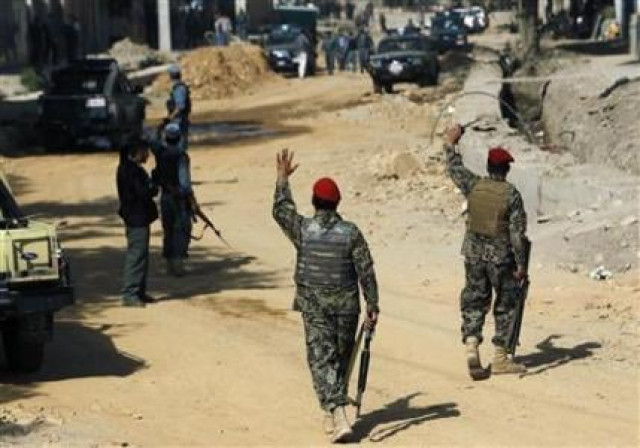Insurgent attacks down, Afghan army casualties up: US
Attacks by militants decreased 6% and assaults involving homemade bombs dropped 22% between April and September.

File photo of Afghan security forces. PHOTO: REUTERS
Attacks initiated by militants decreased six percent and assaults involving homemade bombs dropped 22 percent between April and September, according to a Defense Department report to Congress.
About 80 percent of the insurgent attacks occurred in areas where less than 25 percent of the population lives. The ten most violent districts, mainly in Helmand and Kandahar provinces, represent three percent of the country's population but 30 percent of all attacks, the report said.
The Taliban has "failed" to achieve its declared goals in recent months and "its ability to strike at major population centers is under pressure," the report said.
But "the insurgency has also consolidated gains in some of the rural areas in which it has traditionally held power."
The assessment suggested a sense of stalemate in the grinding war between the Western-backed Afghan government and Taliban insurgents, who were toppled from power in 2001 by US-led forces after the September 11 attacks.
The report covers a period in which, for the first time, the Afghan army and police are responsible for the security of the entire country, with NATO's International Security Assistance Force playing a supporting role with advice and logistical support.
The Kabul government security forces "now conduct 95 percent of conventional operations in Afghanistan and 98 percent of special operations in Afghanistan," the report said.
The only unilateral operations by the NATO-led coalition are focused on protecting their own troops, securing and clearing roads and redeploying forces, it said.
The ISAF contingent is due to depart in 2014 and troops continue to gradually withdraw. About 48,500 US forces remain, and 27,000 other coalition troops were on the ground as of Thursday, according to Pentagon officials.
The Afghan security forces, including police and army units, now number nearly 345,000.
As the Afghans lead combat operations, casualties are rising steadily.
The number of Afghans killed or wounded in combat increased 79 percent April to September, compared to the same period last year, according to the report, which did not provide detailed numbers.
ISAF casualties, meanwhile, have declined 59 percent compared to the same time frame last year, it said.
Apart from questions about the ability of Afghan forces to operate without NATO air support and other assistance after 2014, the country has faced political and economic challenges that "continue to foster uncertainty about long-term prospects for stability," the report said.



















COMMENTS
Comments are moderated and generally will be posted if they are on-topic and not abusive.
For more information, please see our Comments FAQ